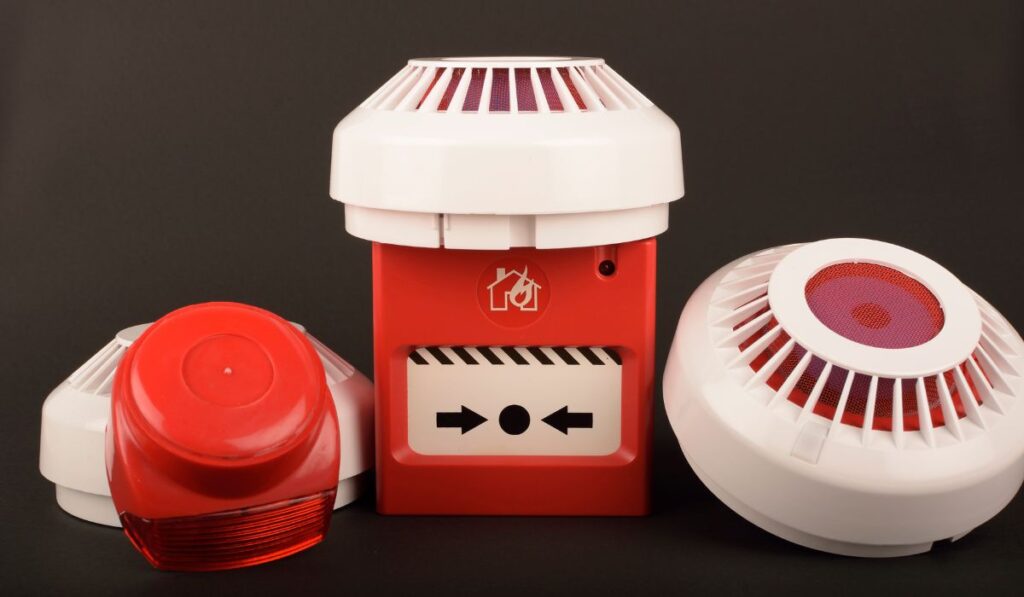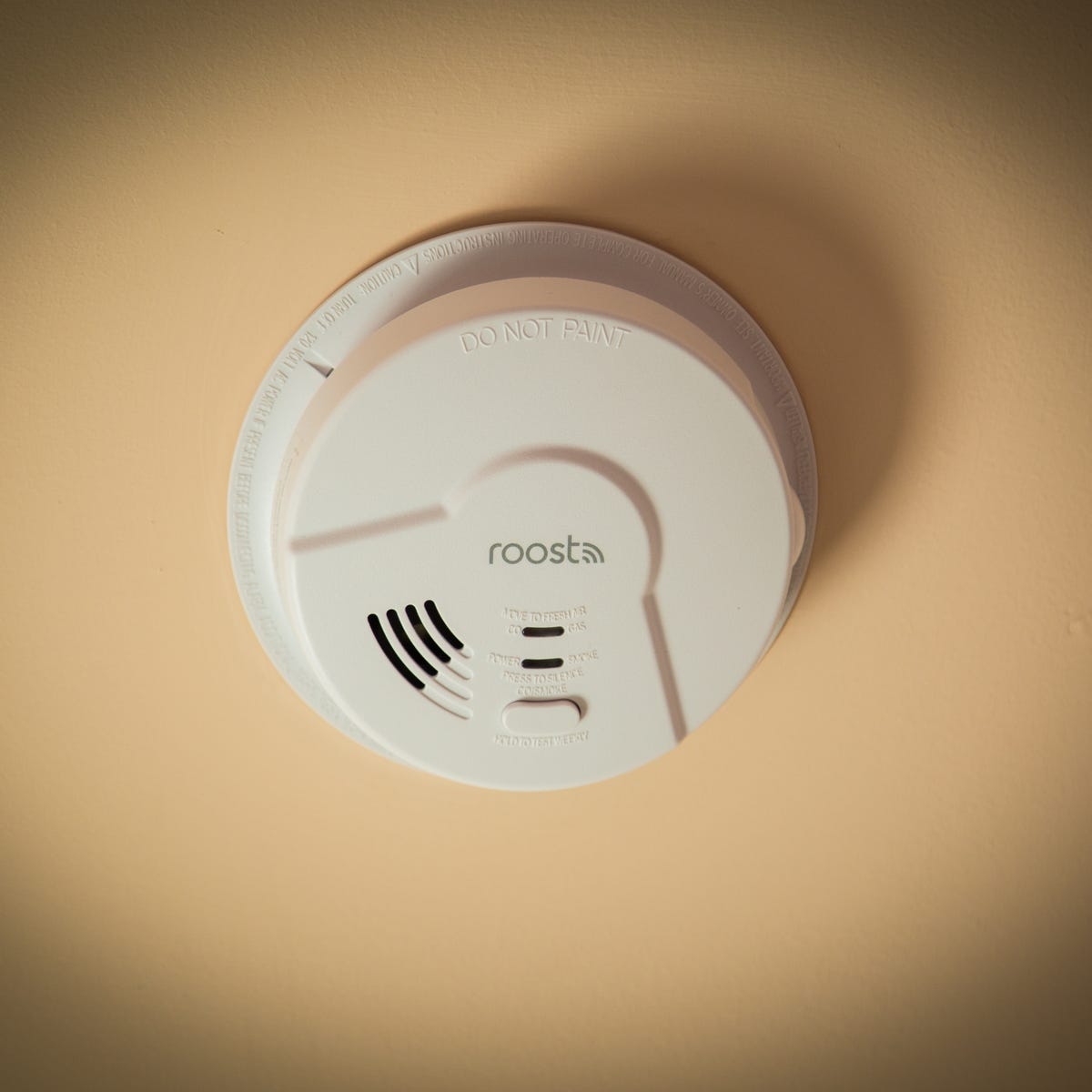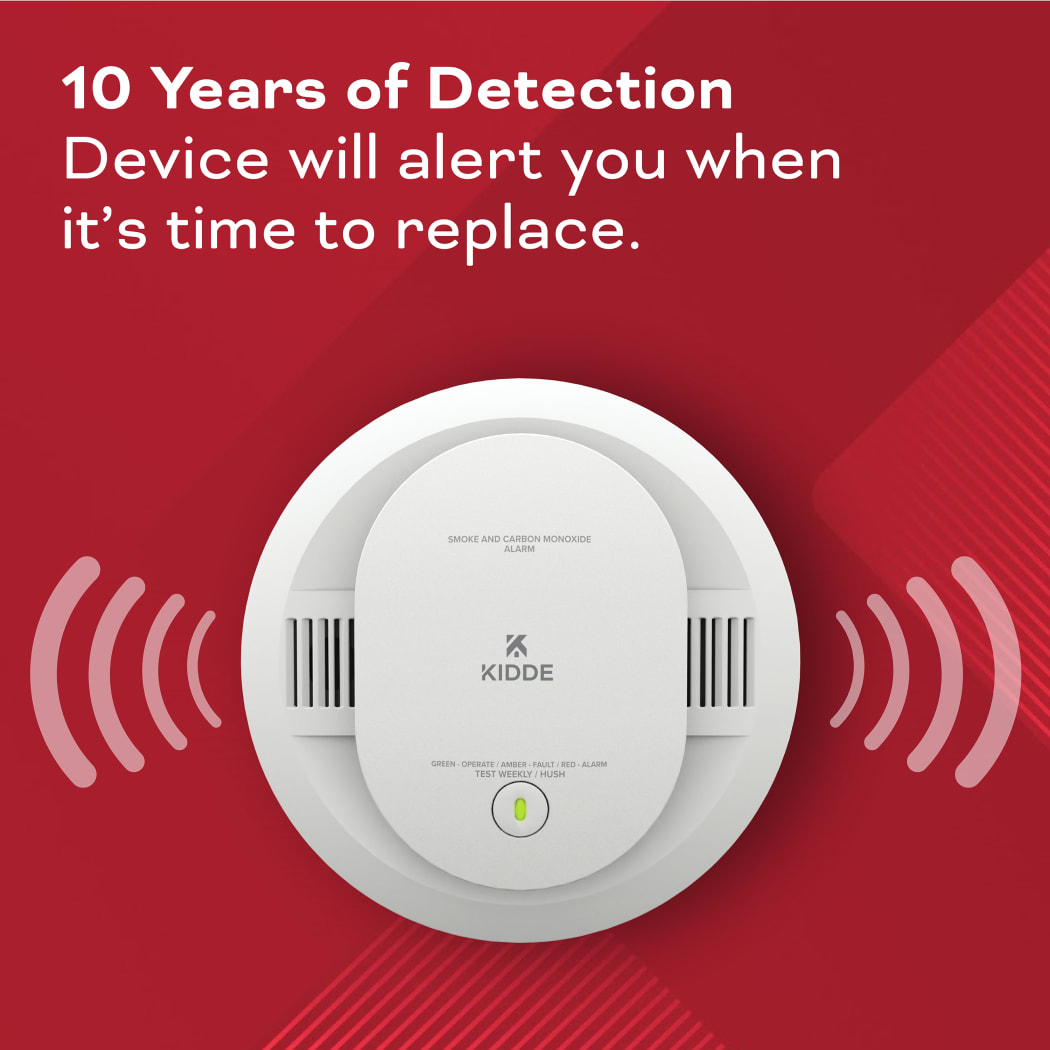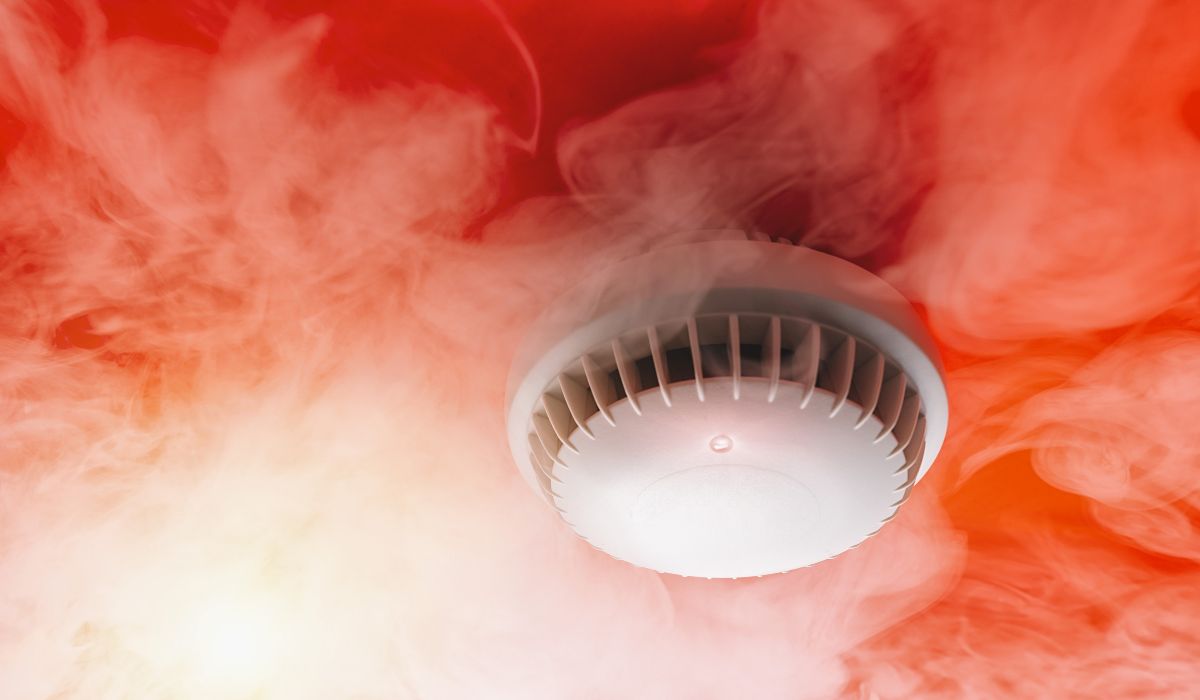Standard fire alarms do not detect carbon monoxide (CO); specialized CO detectors are necessary for that purpose. Some combinations of smoke and CO alarms do exist to detect both dangers.
Ensuring the safety of residential and commercial spaces is crucial, and understanding the capabilities of different alarm systems plays a pivotal role in this. While traditional fire alarms alert occupants to the presence of fire by detecting smoke or heat, they do not sense carbon monoxide, a colorless, odorless gas that can be fatal in high concentrations.
For this reason, it’s essential to install carbon monoxide detectors, either as stand-alone units or as part of combination alarms designed to offer comprehensive protection. These devices are critical, especially in enclosed spaces where fuel-burning appliances are in use, as they can quickly alert occupants to any dangerous accumulations of CO gas, allowing for timely evacuation and the prevention of carbon monoxide poisoning.
The Basics Of Fire Alarms

Fire alarms stand as the first line of defense in the protection against fire-related incidents. Their primary role hinges on prompt detection and warning. This allows individuals to take necessary action swiftly.
Components And FunctionalityFire alarms consist of several key components:
- Sensors to detect smoke or heat
- Alarms to sound the alert
- Control units to manage the system
Together, these parts work seamlessly to detect fire signs and notify occupants.
- Sensors pick up signals of potential danger.
- Control units receive this information and assess it.
- If a fire is detected, the alarm sounds loudly to warn everyone.
Common Misconceptions
A widespread belief is that all fire alarms also detect carbon monoxide (CO). This is not accurate. While some models offer dual protection against fire and CO, many standard fire alarms do not.
Standard fire alarms do not sense CO – a dangerous gas without a smell, color, or taste. It takes a special sensor to detect carbon monoxide. Property owners should ensure they have both fire and CO detection capabilities in their building.
It is critical to understand the difference between fire alarms and combination smoke and carbon monoxide detectors:
| Fire Alarm | Combination Detector |
|---|---|
| Detects smoke and heat | Detects smoke, heat, and CO |
| Sounds an alert for fire | Sounds different alerts for fire and CO |
For comprehensive safety, consider installing combination detectors or adding a separate CO detector to the existing fire alarm system.
Carbon Monoxide: The Silent Killer
Carbon monoxide (CO) is a deadly gas that can haunt homes without warning.
It’s colorless, odorless, and undetectable by humans without the help of technology.
Understanding its dangers is crucial for every household’s safety.
Characteristics Of Carbon Monoxide
- Invisible: CO gas cannot be seen.
- Odorless: It has no smell.
- Tasteless: You can’t taste CO.
- Non-irritating: CO won’t cause a sore throat or eyes.
- Poisonous: Exposure can be fatal.
Sources In The Home
Many common devices release CO. Knowing possible CO sources helps prevent poisoning.
| CO Source | Prevention Tip |
|---|---|
| Gas Heaters | Inspect annually |
| Stoves/Ovens | Use with ventilation |
| Fireplaces | Clean and check yearly |
| Generators | Never use indoors |
| Car Exhaust | Avoid running in a garage |
Comparing Smoke And Co-Detection
Protecting homes from fire and poisonous gases is crucial. Smoke alarms and carbon monoxide detectors perform different safety roles. Understanding how they detect threats is key for home safety. Let’s delve into the detection technologies used by each device and their response mechanisms.
Detection Technologies
Smoke alarms use two main technologies:
- Ionization: Quick to detect fast flames.
- Photoelectric: Better with smoldering fires.
In contrast, carbon monoxide detectors sense CO gas. They operate differently:
- Biomimetic: Uses gels that change color when exposed to CO.
- Metal oxide semiconductors: Heat reactions detect CO presence.
- Electrochemical: Electrical currents identify gas levels.
Response Mechanisms
Once a threat is detected, alarms react promptly:
| Device Type | Threat | Response |
|---|---|---|
| Smoke Alarm | Smoke Particles | Loud Beeping |
| CO Detector | Carbon Monoxide Gas | Loud Alarm |
Smoke alarms beep when smoke blocks a sensor. CO detectors alarm when CO levels rise. Fast responses can save lives. It’s best to have both in your home for full protection.

Smoke alarms
Types Of Fire Alarms
Understanding the types of fire alarms is crucial for choosing the right safety measures for your home. Fire alarms come in various forms. Some detect smoke. Others sense heat. A few can detect carbon monoxide. Let’s explore the common types.
Ionization And Photoelectric Alarms
Ionization alarms are quick to spot fast flames. They have a small amount of radioactive material. This material reacts to smoke particles. It triggers the alarm.
Photoelectric alarms respond to smoldering fires. They use light sensors. When smoke disrupts the light beam, the alarm activates.
- Ionization: best for rapid fires.
- Photoelectric: ideal for slow-burning fires.
Combination Alarms
Combination alarms give the best of both worlds. They combine ionization and photoelectric technologies. They can sense different fire types. Some can detect carbon monoxide (CO) as well.
CO is a deadly gas. It is colorless and odorless. Finding CO and fire together maximizes safety. Look for combo alarms. They should say “smoke and carbon monoxide detector” on the label.
- Combines ionization and photoelectric.
- Detects smoke and CO.
- Increases overall safety.
Myth Vs. Reality: Fire Alarms’ Co Sensitivity
Many homes have fire alarms to keep us safe. People often think these alarms can also sense carbon monoxide (CO). It’s important to know what fire alarms really do. Let’s explore some myths and uncover the truth about fire alarms and CO.
Beneath the blaring sirens of a fire alarm lies a web of myths. Many believe that all fire alarms automatically detect CO. This belief could put families at risk. Understanding the facts is key to proper home safety.
- All fire alarms detect CO: A common myth, but not true.
- Sensing smoke means sensing CO: Smoke and CO are different, and so are their detectors.
- One alarm does it all: Many think one device provides complete protection. This isn’t always so.
The truth about fire alarms and CO might surprise you. Not all fire alarms have CO detectors built-in. Let’s clear the air with facts:
| Fire Alarm Feature | Can Detect CO? |
|---|---|
| Standard Fire Alarms | No, smoke only. |
| Combination Alarms | Yes, smoke and CO. |
| CO Alarms | Yes, CO only. |
Check your alarms. Homes need both fire alarms and CO detectors for full safety. Installing a combination alarm could save space and provide peace of mind, but ensure it’s labeled for both smoke and CO detection.
The Importance Of Carbon Monoxide Detectors
Carbon monoxide (CO) is a silent threat in our homes. Odorless, colorless, and tasteless, this gas can cause harm without warning. Symptoms of CO exposure can mimic the flu, making detection difficult without a proper alarm. Carbon monoxide detectors save lives by alerting residents to dangerous CO levels, providing precious time to evacuate and seek help.
Legislation And Safety Codes
Laws vary by location, but many places require CO detectors in residential properties. These regulations aim to protect occupants from CO poisoning, a silently lethal byproduct of burning fuels. Beyond individual safety, these laws ensure community well-being, compelling property owners to install and maintain CO alarms.
Installation And Placement
Choosing the right spot for your CO detector is critical. You should place it near sleeping areas to hear alerts while asleep. High-risk areas, like near furnaces or stoves, also need coverage. For optimal safety, follow the manufacturer’s instructions on placement and installation. Do not install near windows or places where drafts might interfere with the detector’s operation.
| Location | Importance |
|---|---|
| Sleeping Areas | To alert while you sleep |
| Near Furnaces | To detect leaks quickly |
- Check your local regulations for specific installation requirements.
- Use the proper mounting hardware to secure detectors.
- Test alarms monthly to ensure functionality.
- Replace units every 5-7 years as sensors degrade over time.
- Read the user manual completely.
- Determine the best locations in your home.
- Drill and mount according to the instructions.
- Regularly maintain it for optimal safety.
Integrating Co-Detection Into Fire Alarm Systems
Understanding the importance of safety at home leads to the vital question: Do fire alarms detect carbon monoxide (CO)? While traditional fire alarms focus on smoke detection, integrating CO detectors can significantly enhance your home safety measures. Let’s explore the efficient ways to incorporate CO detection into fire alarm systems.
Combined Detector Units
- Smoke and CO detection in one device
- Streamlined installation process
- Cost-effective solution
Modern technology simplifies safety with combined detector units. These devices provide comprehensive coverage by alerting you to both smoke and carbon monoxide presence. Since they are merged into one unit, they save space and maintenance time, offering a smart and economical choice for homeowners.
Smart Home Systems And Iot
- Seamless integration with home automation systems
- Real-time alerts to your devices
- Remote monitoring capabilities
The Internet of Things (IoT) extends smart safety features directly to your fingertips. Integrating your fire alarm system with IoT means you get instant notifications on your smartphone or tablet, no matter where you are. Your home’s safety net evolves with the added advantage of remote monitoring, making smart home systems a top choice for conscientious homeowners.

Credit: nypost.com
Maintaining Safety: Best Practices
Safety at home is crucial for everyone. Understanding your fire alarm’s capabilities can save lives. Fire alarms do not always detect carbon monoxide. This harmful gas is colorless and odorless. For complete protection, consider installing a combination smoke and carbon monoxide detector. Follow these best practices to ensure safety for you and your loved ones.
Regular Testing and Maintenance
Regular Testing And Maintenance
Keep your detectors in top shape with these steps:
- Test alarms monthly by pressing the test button.
- Replace batteries at least once a year unless it’s a 10-year sealed alarm.
- Clean dust and debris off your detectors regularly.
- Replace detectors every 10 years or as recommended by the manufacturer.
Remember to keep a record of testing and maintenance activities.
Recognizing Alarm Signals
Recognizing Alarm Signals
Different beeps mean different things. Know these signals:
| Signal Type | Meaning |
|---|---|
| Continuous Set of Four Beeps | Immediate danger, such as fire. |
| One Chirp Every 30-60 Seconds | Low battery or unit malfunction. |
| Five Chirps at Minute Intervals | End of alarm life signal. |
Always take immediate action if the alarm sounds. Never ignore any alarm signal.
Being Prepared: Emergency Planning And Awareness
Being prepared for emergencies saves lives. Homes should have a plan for unexpected events, including fire and carbon monoxide (CO) leaks. While most fire alarms do not detect CO, certain combination smoke and CO detectors do. Knowing how to respond quickly when these alarms sound is crucial.
Creating An Escape Plan
- Map your home: Include all windows and doors.
- Plan two ways out of every room, if possible.
- Choose a meeting place outside your home.
- Practice regularly: Run drills with everyone in the home.
Co Poisoning Symptoms
| Symptom | Description |
|---|---|
| Headache | A common early sign of CO exposure. |
| Dizziness | Feeling lightheaded or unsteady. |
| Nausea | Upset stomach, could lead to vomiting. |
| Confusion | Disorientation or memory problems. |
| Shortness of breath | Difficulty breathing, a sign of possible poisoning. |
If anyone experiences these symptoms, get fresh air immediately and call for help. Educating everyone about these signs can be a life-saver.
Advancements In Safety Technology
Advancements in safety technology play a pivotal role in guarding our homes and loved ones. The sophistication of fire alarms has grown exponentially over the years. Not only do they detect smoke, but some now incorporate carbon monoxide (CO) detection as a standard feature. These dual-sensor alarms provide comprehensive protection from two silent threats: fires and CO, a deadly, odorless gas.
Innovations In Detector Design
The integration of smarter sensors and intelligent algorithms has reshaped fire and CO detectors. Designs now often include:
- Smart connectivity for remote monitoring
- Dual-sensing technology to detect smoke and carbon monoxide
- Interconnectivity with other alarms for unified alerts
These cutting-edge detectors are sleek, less intrusive, and blend in with the aesthetics of modern homes, making safety both functional and visually pleasing.
Future Of Home Safety Monitors
Looking ahead, the future of home safety revolves around the concept of smart home integration. Expect advancements such as:
- Artificial intelligence driving predictive maintenance
- Longer-lasting batteries for uninterrupted protection
- Self-diagnostic features for real-time health checks
Such innovations imply a near future where fire alarms and CO detectors not only warn about emergencies but also prevent them. They aspire to create a home environment that is not just safe, but intelligently secure.

Fire Alarms and CO Detectors
Frequently Asked Questions For Do Fire Alarms Detect Carbon Monoxide?
Do All Fire Alarms Detect Co?
Not all fire alarms are equipped to detect carbon monoxide. Only combination smoke and CO alarms have this capability.
How Do Co Detectors Work?
Carbon monoxide detectors use chemical, electrochemical, or biomimetic sensors to identify CO levels and trigger an alarm.
Can Smoke Alarms Sense Co?
Standard smoke alarms cannot detect carbon monoxide. Specialized combination alarms are needed for detecting both smoke and CO.
Are Co Alarms Required By Law?
In many places, CO alarms are legally required in residential dwellings, particularly where fuel-burning appliances are used.
What Triggers A Co Alarm?
CO alarms are triggered by an accumulation of carbon monoxide gas, often from combustion fumes, at a level posing a risk to humans.
Where Should Co Alarms Be Installed?
CO alarms should be installed near sleeping areas and on every level of the home, following manufacturer instructions for placement and distance.
Conclusion
Understanding the capabilities of your fire alarm is crucial for your safety. Standard units may not detect carbon monoxide. Investing in a combined smoke and CO detector is recommended. Secure your home and protect your loved ones by choosing the right alarm system.
Stay informed and stay safe.

I’m Abdus Sobur, a highly skilled and professional Fire Safety Officer with a passion for safeguarding lives and property. Over the course of my career, I’ve conducted numerous successful fire safety audits, earning a reputation for excellence in ensuring public safety.
In addition to my role as a Fire Safety Officer, I’m also dedicated to raising awareness about the importance of fire safety. Through my blog, I share insights into the functions of different fire safety equipment, aiming to empower individuals with the knowledge they need to protect themselves and their communities.
I’m driven by a deep commitment to promoting fire safety awareness and preventing fire-related incidents.

